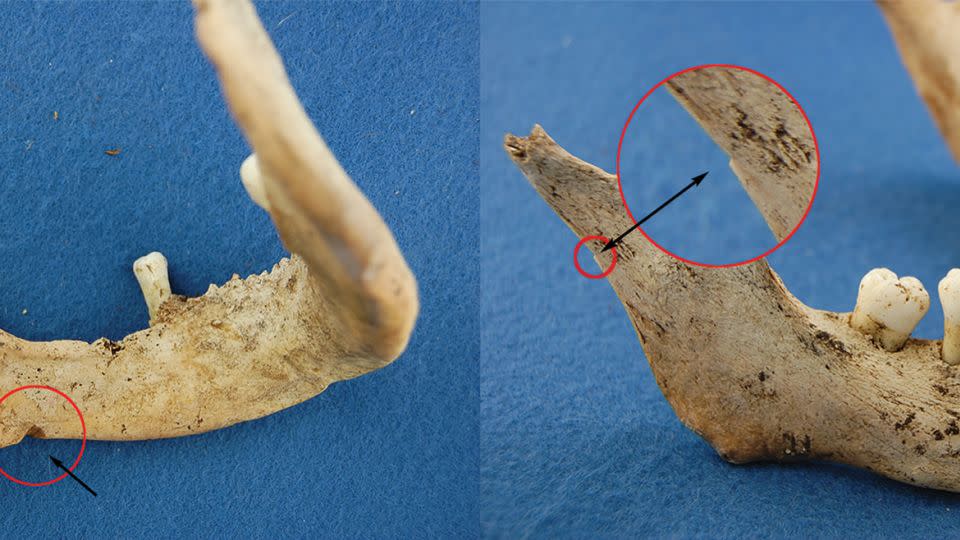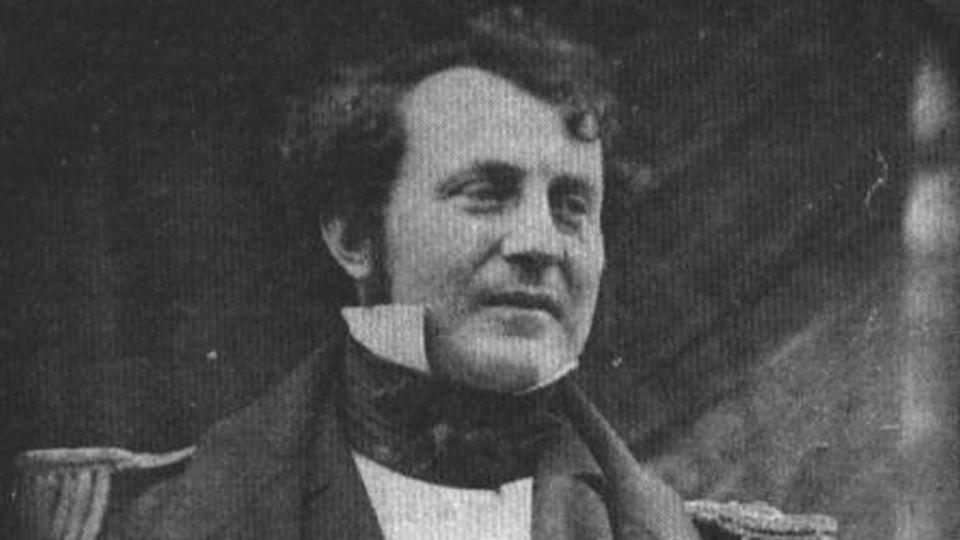Sign up for CNN’s Wonder Theory science newsletter. Explore the universe with news about fascinating discoveries, scientific developments and more.
Archaeologists have identified the cannibalized remains of a senior officer who died during an ill-fated Arctic expedition in the 19th century, offering insight into the tragic and grisly final days of the lost crew.
By comparing DNA from the bones with a sample from a living relative, the new research revealed that the skeletal remains belonged to James Fitzjames, captain of HMS Erebus. The Royal Navy ship and its sister ship, HMS Terror, were commanded by Sir John Franklin, who led the voyage to explore unnavigated areas of the Northwest Passage. The treacherous shortcut across the top of North America winds through the islands of the Canadian Arctic Archipelago.
In April 1848, exactly three years after the ships left England, the expedition crew abandoned the ice-trapped ships after the deaths of Franklin and 23 other men. Fitzjames helped 105 survivors on a long retreat; the men pulled boats on sleds overland in the hope of finding safety. However, the men all lost their lives during the arduous journey, although the exact circumstances of their deaths remain a mystery.
“It went terribly wrong, terribly quickly,” says archaeologist Doug Stenton, an adjunct professor of anthropology at the University of Waterloo in Canada, who led the study.
Another team of researchers in 1993 found 451 bones believed to belong to at least 13 of Franklin’s sailors at a site on King William Island in Canada’s Nunavut territory. The remains identified as Fitzjames in the new study, published September 24 in the Journal of Archaeological Science, were among them.

Accounts collected from local Inuit people in the 1850s suggested that some crew members resorted to cannibalism. Although these reports were initially met with disbelief in England, subsequent investigations over the past forty years revealed that a significant number of bones showed lacerations that provided silent evidence of the expedition’s catastrophic end.
Identifying Fitzjames’ remains makes a tragedy that has long gripped the collective British and Canadian psyche more personal and provided some closure for the families involved, says anthropologist and historian Claire Warrior, senior content curator at the National Maritime Museum in London, where many people are housed. objects of the expedition. “This is a person who had a life and a family and whose words we have, … (and he was) lively, enthusiastic and a jokester,” said Warrior, who was not involved in the new investigation.


DNA analysis and a direct descendant
Researchers unearthed Fitzjames’ remains in an area now known as Erebus Bay, 50 miles south of Victory Point, where the crew came ashore in search of refuge and escape. The circumstances suggest that Fitzjames died a few weeks after leaving Victory Point and that he may already have been in poor health, according to the inquest.
The bones excavated at the site were returned to King William Island in 1994 and buried in a memorial cairn. However, in 2013, Stenton was part of a team that went to the island to take samples of the remains for DNA analysis. The researchers focused mainly on teeth, where the fragile DNA is most likely to be preserved.
“We have about 42 archaeological DNA profiles,” said Stenton, a retired heritage director for the Nunavut Department of Culture and Heritage. “If new descendant DNA becomes available, we compare it with the archaeological DNA profiles.”
In early 2024, Stenton’s team contacted Nigel Gambier, who had been identified by a biographer of Fitzjames as a direct descendant.
“I enjoyed helping. The lengths so many different people went to try to figure out what happened. I find it really intriguing, and I have a personal interest in what happened,” Gambier, who lives in eastern England, told CNN.
Gambier had long been aware of his distant cousin Fitzjames, who was an experienced Royal Navy officer before joining Franklin’s expedition. After Gambier sent a swab sample to Stenton’s co-author Stephen Fratpietro, technical manager at the Paleo-DNA Laboratory at Lakehead University in Thunder Bay, Ontario, the team analyzed DNA from Gambier’s Y chromosome, which follows the male line. The scientists found that the genetic information matched that of the archaeological sample.


Fitzjames is the second expedition member to be identified through descendant DNA. The first was Erebus’ chief engineer John Gregory, whose remains were found at the same site. Stenton and his team matched Gregory’s DNA to a living relative in 2021, the study said. However, unlike Fitzjames’ remains, Gregory’s bones showed no lacerations indicative of cannibalism.
In Erebus Bay, in addition to Fitzjames, at least three other men of the thirteen dead crew members documented at the scene showed telltale signs that they had been cannibalized.
“It makes me realize how desperate those poor people must have been to have to eat one themselves,” Gambier said. ‘How do you know how you would behave? If you face famine, you may be driven to it.”
There are still more clues to unravel
The discovery of Fitzjames, a senior officer, as the first identified expedition member to be cannibalized showed how status fell away in the battle for survival during the expedition’s final days, Stenton said.
Warrior from the Maritime Museum agreed: “We now know that it was an officer because of cuts on his jawbone. I think that’s a testament to the fact that these were desperate circumstances, because the Navy is a real hierarchical beast.”
Further identification of remains via DNA could shed some light on the mystery of what exactly unfolded, according to Warrior. For example, she said it would be interesting to know whether the remains found belonged to older or younger men or came from HMS Erebus rather than HMS Terror.
“Can we suspect anything that tells us how they might have died?” she said.
Canada’s National Parks Service and Inuit communities found the final resting place of HMS Erebus in 2014 and HMS Terror in 2016. The fate of Franklin’s lost expedition will likely remain a source of fascination, but piecing together the details of what is there happened will require much more information, also from the two shipwrecks.
The doomed expedition has inspired books and dramas such as “The Terror,” a 2018 television series based on Dan Simmons’ 2007 novel of the same name.
“It’s as much in the imagination as it is in reality,” Warrior said. “Arctic regions are extreme and dangerous places, where nature can still make us feel small.”
For more CNN news and newsletters, create an account at CNN.com